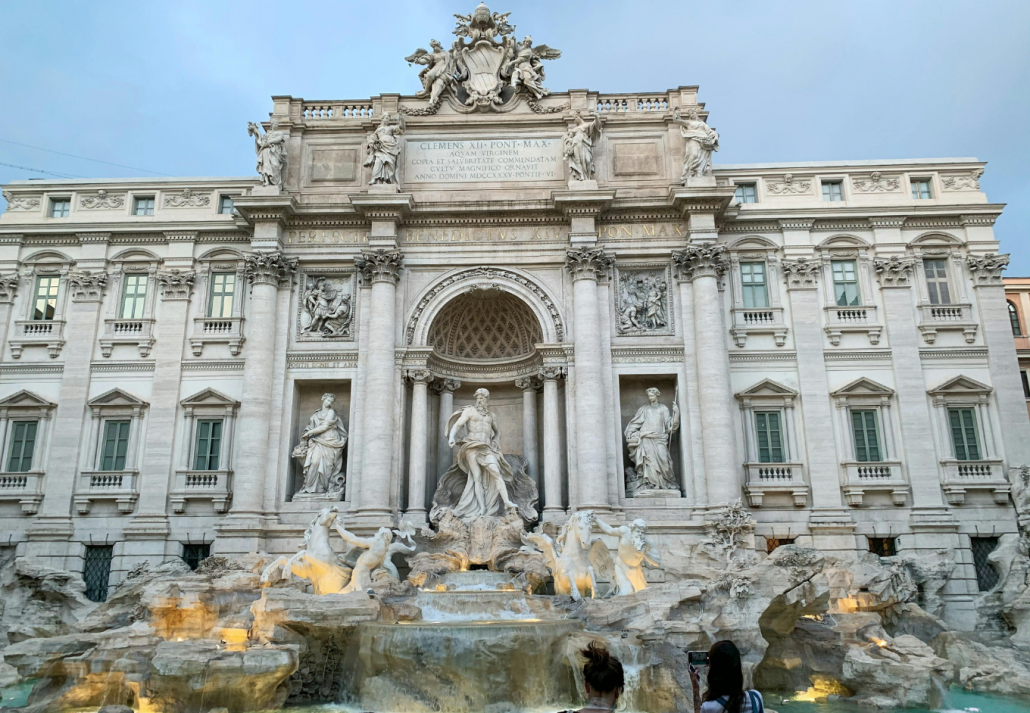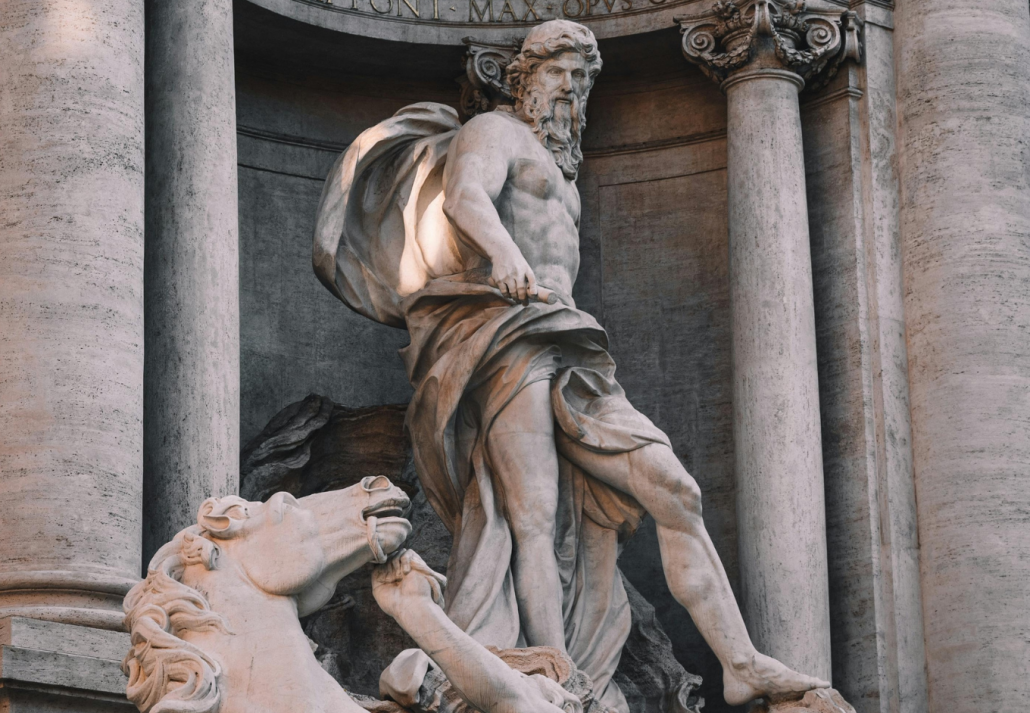A Guide to the Rome Trevi Fountain: Everything You Need to Know
Famous across the world for its architectural wonders, particularly those of the Baroque era, Rome is a center of history and culture. A standout example of Baroque artistry and engineering among these marvels is the Trevi Fountain (Fontana Di...

Famous across the world for its architectural wonders, particularly those of the Baroque era, Rome is a center of history and culture. A standout example of Baroque artistry and engineering among these marvels is the Trevi Fountain (Fontana Di Trevi).
More than just a tourist destination, Rome’s Trevi Fountain is a representation of the city’s rich cultural legacy. It is the largest fountain in the city and perhaps one of the most magnificent Baroque buildings in the world.
Completed in 1762, Nicola Salvi designed the fountain, which features Oceanus, the god of all water, surrounded by a tableau of elaborately carved mythological and allegorical figures. The narrative in stone and water reflects Rome’s historical relationship with water—from the prehistoric aqueducts to its function in everyday Roman life—and is not merely a display of creative skill.
The Trevi Fountain, or Fontana di Trevi, is not merely a masterpiece of Baroque artistry but a symbol of romance, legend, and the eternal spirit of the Eternal City itself.
Why is the iconic fountain so unique? Let us embark on a journey to unravel the mystique and magnificence of this iconic landmark.
Quick Overview Of The Blog: A Guide to the Rome Trevi Fountain: Everything You Need to Know
What is Special About the Fontana Di Trevi? Trevi Fountain Statues Why Throw a Coin in the Trevi Fountain? FAQWhat is Special About the Fontana Di Trevi?

The Fontana di Trevi, or Trevi Fountain, is renowned for its majestic beauty, intricate Baroque architecture, and rich historical significance. It symbolizes Rome’s enduring legacy, embodying centuries of artistry, legend, and tradition.
It’s one of the most significant Baroque fountains in the world, measuring roughly 26.3 meters high and 49.15 meters broad. Its entire surface is covered in reliefs and sculptures, each telling a different tale. The water deity Oceanus, who stands in for the main character, is a potent symbol of the sea’s strength and plenty. The composition, which horses and tritons surround, represents the sea’s moods, from tranquil to choppy.
Additionally, folklore and popular culture have a special place for the Trevi Fountain. The custom of tossing coins into the fountain comes from old traditions of giving gifts to the gods, and it has been immortalized in books and movies. Tossing a coin with one’s right hand over one’s left shoulder is supposed to guarantee a trip back to Rome and a lifelong love affair with the city.
However, many books and movies have included references to the Trevi Fountain, most notably Federico Fellini’s 1960 film La Dolce Vita.
In essence, the Fontana di Trevi encapsulates the essence of Rome, inviting travelers to immerse themselves in its timeless allure and the spirit of the Eternal City.
Recommended Read: The 13 Best Attractions in Rome, Italy
Trevi Fountain Statues

The statues of the Trevi Fountain are integral to its grandeur and storytelling. At the center stands Oceanus, the god of the sea, riding a shell-shaped chariot pulled by seahorses and tritons. Flanking him are statues representing Abundance and Health, symbolizing the prosperity and well-being brought by the fountain’s waters.
The fountain is surrounded by the Palazzo Poli, which has four statues that symbolize the rich soil and the blessings of rain, such as flowers, fruits, crops, and the fall harvest. Water and life’s nourishment are linked, as these statues highlight.
The fountain also features other plant representations, such as figs, grapes, ivy, cactus, artichokes, and an oak stump. These plants improve the fountain’s aesthetic appeal and symbolize fertility, abundance, and water’s interdependence in the natural world.
As a result, these sculptures enhance the fountain’s aesthetic appeal and enrich its mythological and cultural significance, inviting visitors to marvel at its beauty and symbolism while immersing themselves in the fountain’s timeless charm.
Why Throw a Coin in the Trevi Fountain?
 Photo Credit: Italy Rome Tour
Photo Credit: Italy Rome TourThe throwing of a coin into the Trevi Fountain is more than just a tourist attraction; it is a custom rich in history and laced with myth and hope. Although many people identify this tradition with the 1954 film “Three Coins in the Fountain,” which romanticizes the gesture by telling the tales of three American women in Rome, the custom’s origins go much further back in time.
The act of tossing coins into the Trevi Fountain carries a deeper significance beyond just a wish for a return to Rome. Here’s a breakdown of the symbolism associated with each coin:
The First Coin – Pledge for Return to Rome:
Tossing the first coin into the Trevi Fountain symbolizes a pledge or promise to return to Rome someday. It reflects the visitor’s deep admiration for the city’s rich history, culture, and beauty, leaving a part of themselves behind with the hope of experiencing Rome’s enchantment again.
The Second Coin – Hope for Romance:
The second coin represents the visitor’s desire for love and romance. With its timeless charm and romantic ambiance, Rome has long been associated with tales of passion and allure. By casting a second coin into the fountain, visitors express their hope for experiencing or deepening romantic connections, whether with a partner or as a new love story unfolding in the Eternal City’s embrace.
The Third Coin – Wish for Marriage:
Tossing the third coin signifies a more profound commitment to love and partnership. It represents the visitor’s wish for a lasting and fulfilling relationship, perhaps culminating in marriage. This coin embodies the visitor’s aspirations for a future filled with love, happiness, and companionship, all intertwined with Rome’s magical backdrop.
There’s a proper manner to take part in this tradition. With their back to the fountain, one should stand and use their right hand to hurl the coin over their left shoulder. This process gives the act a ceremonial quality that deepens its symbolic importance.
Furthermore, the coins collected from the fountain are donated to charity, furthering the fountain’s legacy as a symbol of hope, generosity, and the enduring allure of Rome.
Kate, an enthusiastic traveler, says, “A trip to Rome would only be complete with seeing this gorgeous and renowned fountain. Though it can get bustling, if you love taking photos, the earlier in the day you go, the less crowded it will probably be.”
FAQ
What makes the Trevi Fountain so famous?
The 1954 film “Three Coins in the Fountain” highlighted the custom of throwing coins into the Trevi Fountain, which increased in popularity.
Is The Trevi Fountain about love?
The best-kept secret of Rome Trevi Fountain is right in front of you: the fountain of the lovers! The legend says that couples who drink from this fountain will remain faithful and in love forever!
What powers the Trevi Fountain?
The fountain was completed with the assistance of many stonecutters and nine sculptors. Aqueduct Acqua Vergine Antica is nearly entirely underground and provides water to the Trevi.
How to Get to the Trevi Fountain?
The closest bus station is only 100 yards from the fountain at Via del Tritone. Also, Barberini and Spagna are the nearest metro stations for those traveling by train.
Which are the top attractions in Rome?
The following are the top attractions in Rome:
Roman Forum
CuddlyNest provides all accommodations to all travelers at the best price. Find unlimited travel inspiration on our blogs and social media channels Facebook, Instagram, and Pinterest.
You May Also Like:
9 Free Things To Do In Rome, Italy
7 Best Hotels In Rome, Italy

 JimMin
JimMin 


























![Are You Still Optimizing for Rankings? AI Search May Not Care. [Webinar] via @sejournal, @hethr_campbell](https://www.searchenginejournal.com/wp-content/uploads/2025/06/1-1-307.png)



